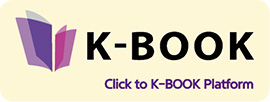Libraries have been around for a very long time in Korea, but the same cannot be said for libraries that fall under the modern definition. Pioneers who wanted to establish a new country as the late 19th century Joseon Dynasty passed, followed by the early 20th century Korean Empire, had the goal of establishing libraries under the modern concept. However, due to the arrival of Japanese colonization, they could not achieve the goal, and the concept of libraries changed as they became more of a tool for colonization. Finally, in 1945, colonization was brought to an end, and the country was liberated, but hardship struck with the Korean War that followed soon after.
However, with the growth of the economy and the expansion of democracy, libraries have been endlessly changing and advancing to support the growth of citizens, the real owners of Korea, which is now under a liberal democracy.
The Current State of Korea’s Libraries
Korea’s libraries are managed under the “Library Act.” This act categorizes libraries into national libraries, regional representative libraries, public libraries (small libraries, children’s libraries, libraries for the disabled, libraries in hospitals, army libraries, prison libraries, a total of 6 types), university libraries, school, and specialized libraries, depending on the founder and purpose of establishment. In addition to the “Library Act,” the “Small Library Promotion Act,” “University Library Promotion Act,” and “School Library Promotion Act” are enacted and enforced on libraries that fall under the acts. The overall state of the libraries in Korea can be observed through the “National Library Statistics System (www.libsta.go.kr).” There are a total of 20,580 libraries in Korea as of now, based on statistics from the end of 2020. There are a total of six national libraries such as the National Library of Korea established and run by the nation, 1,172 public libraries including regional representative libraries and children’s libraries, 433 university libraries, 11,787 school libraries, 36 libraries for the disabled, 52 prison libraries, and 620 specialized libraries. Hospital libraries and army libraries are not included in the official statistics. However, if the 1,855 army libraries included in the evaluation process of library operations annually run by the government are added to the statistics, there are approximately 22,400 libraries in Korea.
While there hasn’t been a significant fluctuation in the types of libraries, there are an increasing number of public and small libraries due to citizens’ demands and positive responses. The local governments that began again in the 1990s have been a big source of power in the change. Recently, there has been about 40 additional public libraries every year. In 2016, there was one public library per 51,184 people, but in 2020, there has been one public library per 44,223 people, a 14% decrease in the population per public library. So citizens can use libraries in a better environment. Additionally, specialized libraries or small libraries providing library services in places closest to the residential areas, although not quite having great facilities or book collections as public libraries, have been grabbing the attention of many people. With hundreds of new small libraries added yearly, there were 6,672 small libraries in 2019. However, the numbers have dropped to 6,474, with about 200 fewer libraries in 2020, due to the struggles in securing finances in the ongoing pandemic last year and this year since 70% to 80% of them are private libraries.
These libraries have around 450 million published books. National libraries have around 16 million books, public libraries have around 118.55 million books, university libraries own 174.52 million books, and school libraries have 196.5 million books. In 2020, national, public, small, university, and school libraries bought about 17.1 million books. The books cost national libraries around 13.79 billion won, public libraries 110 billion won, small libraries 16.3 billion won, university libraries 250 billion won, school libraries 112.2 billion won, which is around a total of 503 billion won. Most Korean libraries purchase books published in Korea, but university libraries use about 70% of the budget for purchasing materials needed to support a variety of academic studies for electronic materials and 24% of the budget for book purchases. Due to the recent COVID-19 pandemic, public libraries and school libraries are making more and more purchases of e-books and audiobooks since it has become difficult for people to visit libraries in person or have access to books. Also, with the increasing number of foreigners, including immigrant laborers or marriage immigrants, libraries in Korea have been purchasing an increasing number of foreign books.
Libraries of Korea are endlessly changing and advancing to help the growth of citizens under the “Library Act.”
Under the “Library Act” of Korea, libraries must deposit a certain number of books to the National Library of Korea (http://nl.go.kr) when books are published. In some cases, libraries must deposit books to the National Assembly Library. In 2020, 238,215 books were deposited to the National Library of Korea, and 53,465 books were deposited to the National Assembly Library. In 2015, the National Library of Korea became the 15th of the libraries worldwide to have more than ten million books. It is now Korea’s biggest library, with more than 13 million books in its collections.
The Presidential Committee on Library and Information Policy of Korea (http://www.clip.go.kr) implements and is in charge of the library policies of Korea under the Library Act. The committee consists of civil experts and government ministers working in the field of libraries. They establish, review, and adjust the major details in library policies concerning the nation. It was established in 2007 and since then has been carrying forward with a national library policy plan, “Complex Plan for Library Advancement,” three times every five years. The third most recently-established plan contains the direction of the policy and content of national libraries from 2019 to 2023. The Ministry of Culture, Sports, and Tourism are responsible for carrying out this plan for the government ministry. In addition, the Ministry of Education that is in charge of elementary and middle school education, plays an important role in the revitalization of university libraries and school libraries.
Due to COVID-19, since 2019, many libraries in Korea have been struggling with being active like the libraries in other countries. Although libraries could not provide proper services at the beginning of the pandemic as they had to close temporarily, the number of borrowed books increased with the addition of drive-thru services, deliveries, door-to-door services, automatic book return machines, and a variety of different non-face-to-face methods. Also, there have been a variety of library services, including online programs for citizens undergoing struggles due to the pandemic. However, the core problem is that these libraries lack experts like librarians on-site, but this is yet to be resolved.
Libraries and Their Relation to Publishing Industries
Libraries might as well be in the same boat as the publishing industries as they act as a medium linking writers and readers together in publishing or reading ecosystems. The two cannot be separated, but recently, they have been cooperating and conflicting on a few issues.
There’s an issue regarding the book net price system. With the amendment of the Publishing Culture Industry Promotion Act in 2015 to reinforce the book net price system, libraries had to purchase books under the book price system. However, the problem is that the budget is not high enough for libraries to buy new books at their net price. The related law was amended so that public libraries can no longer get the 15% discount (10% off the net price) on book purchases. Since libraries have different opinions on the book net price system, it is necessary to find a fitting solution by constantly consulting the publishing industry. Amidst all this, there has been an increasing number of purchases in local bookstores with the social demand and legal obligation to support small local libraries going through difficulties.
The publishing industry in Korea has recently faced difficulties with the decrease in its reading population for many reasons. To overcome this issue, the publishing industry started to demand Public Lending Rights for book loans from libraries. However, libraries are against the implementation of the Public Lending Right, saying that citizens who use the library often also buy more books. The government is currently researching to figure out the actual state, so it is uncertain how the discussion on this issue will go onwards.
On the other hand, with the increase of e-book purchases and library utilization, the number of solutions for the issue is increasing. Most libraries purchased e-books until now, but recently, more and more libraries have been using subscriptions. In this case, libraries can use a wider variety of e-books, but at the same time, they have to spend more depending on the subscriptions, so it can restrict active utilization. Also, there needs to be a specific solution since there are copyright issues between the copyright holders, distributors, and libraries.
Libraries cannot be separated from the publishing industry as they are a medium linking writers and readers.
Korea’s Libraries Head Toward a New Era
With the arrival of a new standard era (new normal) following the 4th industrial revolution era in the pandemic, Korea’s libraries are providing a wider variety of services through the expansion of electronic resources, including e-books and audiobooks and the expansion of a combined online and offline reading program or humanities program. Recently, libraries are also actively working to provide advanced services using advanced technology such as a metaverse system. On the other hand, there isn’t enough budget to purchase materials and not enough experts, including librarians, with the increase of facilities and book collections. School libraries and university libraries are also undergoing struggles with the decrease in the number of students due to the population decrease in children and teenagers caused by the drop in birth rate. In addition, University libraries are facing difficulties as they cannot secure the material they need for subscriptions. However, the subscription fee for the textual database both in and out of the country will greatly increase.
Even through these difficulties, Korean libraries are becoming the center of community activities for citizens. They continue to provide proper library services to citizens and students who have to live in a new generation. Also, libraries are cooperating closely with publishing industries and bookstores to provide support for the reading activities of citizens. More importantly, libraries and librarians are working together to resolve the given issue from the perspective and position of libraries. Hopefully, libraries and public industries worldwide can hold hands together for a better world.
Written by Lee Yong-Hun (Library Culture Critic)













